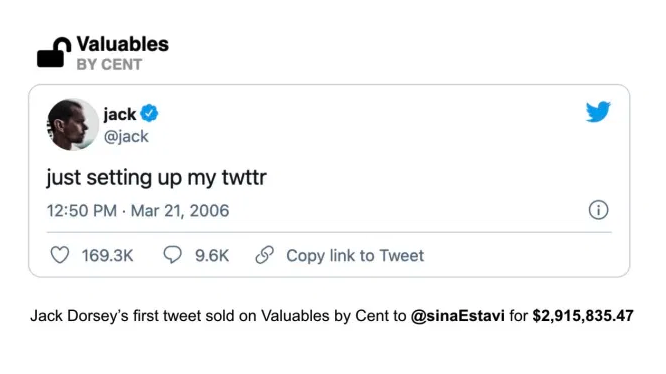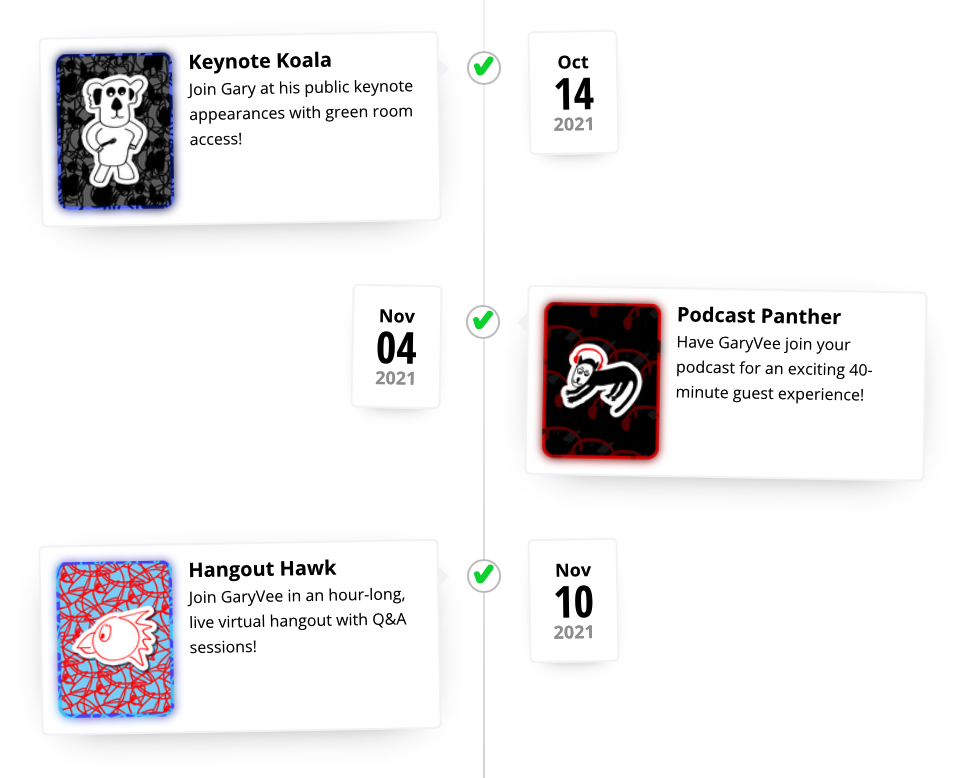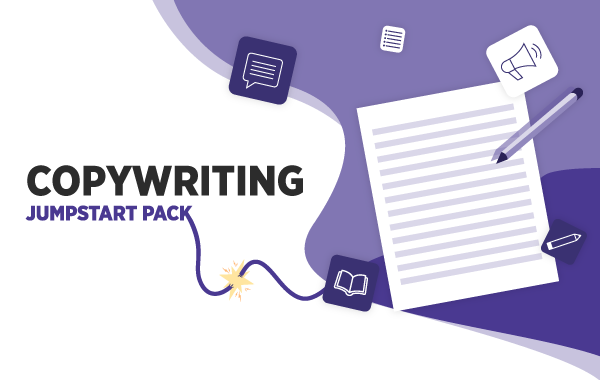
NFTs are more confusing than the latest iOS updates.
How JPEGs could sell for hundreds of thousands, and sometimes millions of dollars, just doesn’t click in our marketing minds.
Getting someone to buy a $50 ecommerce product requires a perfectly formulated funnel, market research, marketing strategies, seemingly endless content, and sometimes, just darn good luck.
Yet, people are selling images online…to other people…for 6+ figures without any of that?! If you’re trying to figure out how the NFT world works and falling flat, it’s not your fault. It’s a new type of Internet that we’re all getting acquainted with. And, just like there was a time where Instagram felt new and foreign—chances are NFTs will become a lot more common in our industry.
That’s why marketers need to know the foundations of NFTs and start thinking about how to market such a new product.
What is an NFT?
NFT stands for non-fungible token. Non-fungible means that each NFT is unique, just like your dog is a unique individual. Even if your pup is a golden retriever, they’re still a special, individual golden retriever that may look like the other goldens but have a unique personality. It’s not interchangeable—which is exactly what an NFT is. Just like your golden retriever is unique because of its personality, an NFT is unique because of its data.
NFTs live on the blockchain. The blockchain is a ledger that keeps track of an NFTs activity (like when it was bought, how much it was bought for, and how much it was sold for). This means that when you buy an NFT, that purchase goes on the blockchain (instead of kept as a receipt in your filing cabinet). If you wanted to see who owned an NFT or even how much the person before you bought the same NFT for—you could just check the blockchain.
Because of the complexity of the blockchain, it’s impossible to manipulate the data stored on it. And this is why cryptocurrency relies on it. NFTs live on the blockchain, and the currency used to buy and sell on the blockchain is cryptocurrency.
Here’s a quick recap:
An NFT is a non-fungible token that is unique (just like your golden retriever).
NFTs live on the blockchain that stores information like who bought it, how much they bought it for, and how much they sold it for (kind of like Zillow for houses, but with real numbers and no way to manipulate the data).
To buy NFTs on the blockchain, you need to use cryptocurrency (Bitcoin, Ether, or if you’re feeling bold, Dogecoin).
If I Bought an NFT, What Would I Get?
NFTs have become popular in mainstream media as graphics (photos, videos, GIFs). But, this is just the tip of the iceberg for what NFTs really do.
NFTs have a utility which means each NFT comes with perks. For some NFTs, the perk is just owning a digital asset you believe will go up in value (the same way you buy stocks). This is the type of NFT Jack Dorsey, co-founder and CEO of Twitter, sold for $2.9 million.
Jack turned his first tweet into an NFT, sold it, and gave the money to Give Directly’s Africa Response fund for COVID-19 relief. Here’s the NFT:

For other NFTs, the perk can be access to an online community, in-person events, physical products, or anything else that aligns with the creator. Take a look at how Gary Vee is selling NFTs. His audience purchases Gary’s drawings (seriously, he drew them all!) and get access to utilities. Gary’s utilities are exclusives like coming to his public keynote appearances with green room access, having Gary join your podcast for a 40-minute interview, or getting an hour-long live virtual hangout with Q&A sessions.

Gary’s NFTs are in the same position as Jack Dorsey’s NFT of his tweet. If the value goes up on a GaryVee NFT, the person who bought it could sell it for a profit and hand over the utility (the keynote access, podcast interview, or Q&A) to another GaryVee fan. As Gary put it, VeeFriends was his creator IPO.
I Took a Screenshot of an NFT—Does That Mean I Own It Now?
This is why NFTs are so valuable. As popular as it is to talk about how you can screenshot an NFT and own it, the reality is you don’t. You can have an NFT as your screensaver on your computer, but if you don’t own it, you don’t make any money from the transactions and increasing value.
You’re more than welcome to enjoy NFTs, just like you’re more than welcome to enjoy the Eiffel Tower, Central Park, and the beaches of Turks and Caicos. But that doesn’t mean you own the building, the park, or the beaches. If the Eiffel Tower sells, you don’t make money from it or get access to its utility because you took a photo in front of it on your honeymoon. The blockchain verifies that you’re not an owner, despite all the photos in your online library.
That’s why you need to own NFTs. But, how do you get people to buy them?
How to Market an NFT
Marketing NFTs comes down to the same foundation of all marketing, messaging. If your message isn’t right, people won’t buy. This is why Donald Miller talks so highly of one-liners and why “I help” statements are so popular in business. A marketer’s job is to tell people what a business does, who they do it for, and the benefit those people get.
To market NFTs, answer these 3 questions.
Does your customer avatar understand NFTs?
Marketing begins with your customer avatar, whether NFTs are the product or not. Understanding your customer avatar is step one because, without that understanding, you can’t create messaging that shows them why they care about your products. There are two tools to use to get to know your customer avatar (and help your copy write itself):
#1: The Before and After Grid
The Before and After Grid looks at the Before State your customer is in as they struggle to fix the problem your business solves. If you’re a marketing agency, the Before State of your customer is a state of frustration, confusion, and burnout as they try to sell their products (but keep coming up short).
The After State is where each of your customers wants to go. As a marketing agency, the After State of your customer avatar is a state of happiness, confidence, and high energy. Sales are coming in, and they feel great about themselves, their company, and working with you.

#2: The Customer Avatar Worksheet
The Customer Avatar Worksheet is a deep dive into who your customer is. What are their goals? Do they have buying power? How much money do they make? Who do they look up to? The Before and After Grid looks at how your business helps your customers get from Point A to Point B.
The Customer Avatar Worksheet figures out the details of each avatar to better understand how you can nurture your relationship with them and relate to them on a higher level (especially in comparison to the competition who didn’t fill this out).

With a thorough understanding of your customer avatar, the question is: do they understand NFTs? If they do, you have the green light to move onto the next question. If they don’t, hit pause. What’s the rate of adoption for this market? If you have to convince them to set up a wallet to make their first cryptocurrency purchase—the market isn’t ready for you to offer NFTs.
You’re looking for an audience who at least owns cryptocurrency. You’re not in the business of teaching them about crypto, blockchain, and why it gives value to society. It’s okay if they’ve never bought an NFT before, though. Your utility will show them why they’re okay with making your product their first NFT purchase.
What utility aligns best with your product?
You know that your audience holds cryptocurrency and is interested in NFTs (some may have purchased NFTs already, or yours might be the first one). Now, it’s time to make sure your offer is on point and in the world of NFTs, that means figuring out what utility best aligns with your product.
GaryVee figured out that his audience wants to spend more time with him and get access like they never have before. He turned his NFTs, essentially, into a way to get closer access to him. By buying his Keynote Koala, Podcast Panther, or Hangout Hawk NFTs, his audience can see him before his keynote, get a podcast interview, or have an hour-long Q&A session with him.
This is the utility of buying a VeeFriend—you get perks!
What utility aligns best with your product?
Here are a few ideas:
- Access to an online community
- Tickets to future live, in-person events
- 5 minute FaceTime with your CEO or founder
NFTs are so popular because utility really ends with your imagination. Whatever your audience would be interested in can be turned into a utility. The sky’s the limit, marketer. Use your creativity to come up with utility and proven copywriting formulas to sell your NFTs.
What copywriting templates will you use to sell your NFT?
Finally, we’re in familiar territory. After all this talk about NFTs, copywriting templates seem like a breeze, huh? While what we market and where we market will always be changing, the way we market won’t. The foundations of marketing physical products and NFTs follow the same rules.
Your favorite copywriting formulas are still your best friends in the NFT world. You can use the classic PAS formula (Pain, Agitate, Solve), AIDA (Attention, Interest, Desire, Action), or hop into DigitalMarketer Lab to check out our Copywriting Jumpstart Pack, Copywriting Mastery certification, and Insider Training with Jennifer Hudye on The 4 Step Copywriting Process.

NFTs

Marketers
Incoming fan girl moment: NFTs are really cool. We’re just at the beginning of NFTs taking over the marketplace, and the possibilities (especially considering Zuck’s newest push to create the metaverse) are impossible to fathom. That means marketers don’t want to wait years to figure out what an NFT means and why they should care.
Understanding how NFTs work today so you can look for opportunities in the future is part of adapting to the endlessly changing marketing landscape. At this point, we’ve all realized that as marketers, we’re just full-time adapters.
Adapting to new platforms, privacy regulations, and now…ways to create products.
To stay on top of what’s happening in the marketing world in real-time, join DigitalMarketer Lab to get Insider Trainings and Workshops for the top marketers worldwide. As a Lab member, you’ll also get access to our Toolbox, Playbooks, and community of 10,000 marketers.
The post What Marketers Need to Know About NFTs appeared first on DigitalMarketer.






